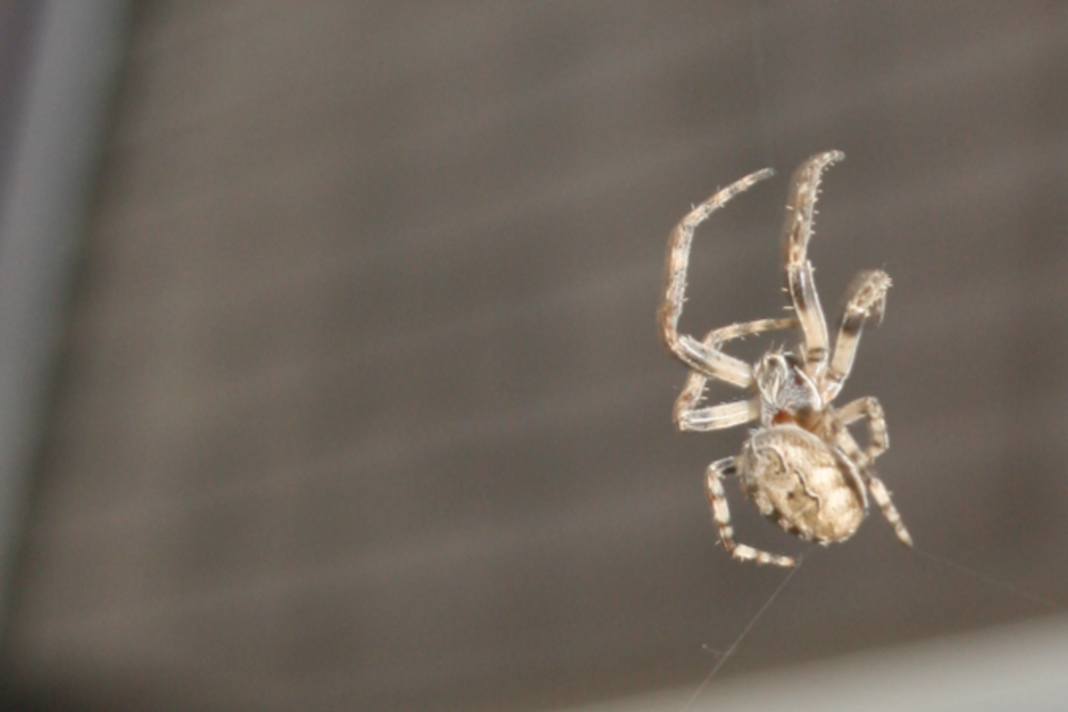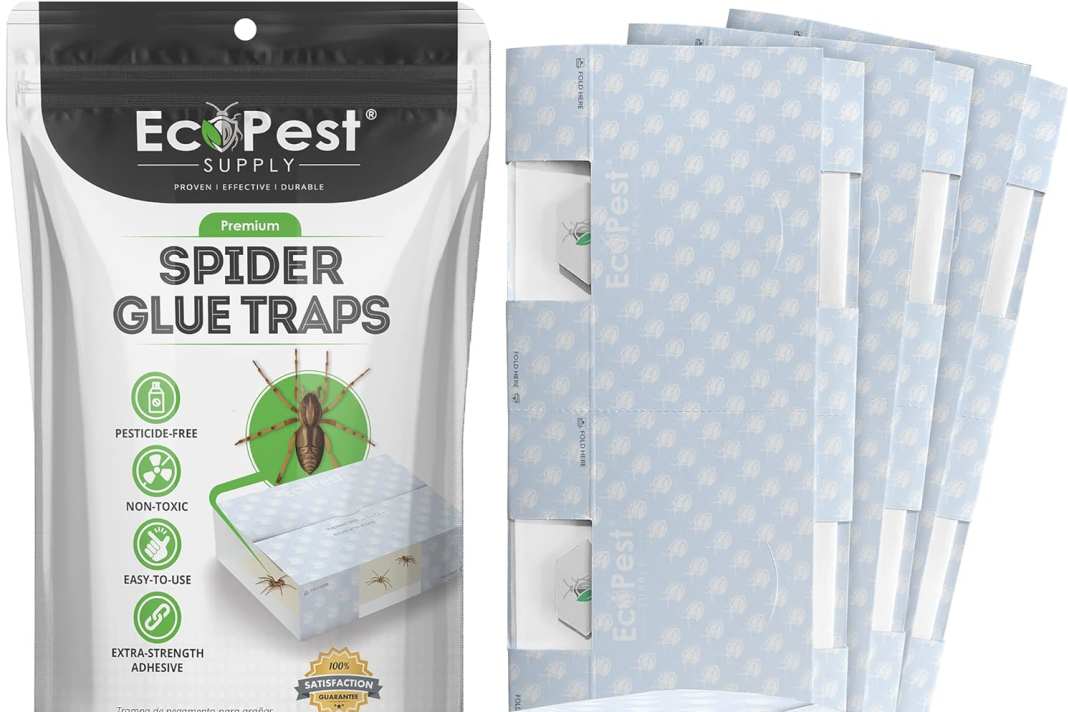On-board practice: What to do about spiders on board? Test anti-spider spray, spider traps





The most common inhabitants on board are only a few centimetres in size, have eight legs and can even terrify adults - they are spiders. Despite their generally recognised usefulness and importance, spiders are not usually very popular on board. Not everyone is comforted by the fact that spiders curb the spread of other insects. Women on board in particular are sometimes annoyed when they encounter one of these useful creatures at eye level in the corridor in the morning.
Light attracts spiders
Spiders love light. Brightness attracts mosquitoes and other insects, which serve as a food source for spiders. It therefore makes sense for them to weave their webs in places where artificial light and a suitable habitat ensure a constant flow of food. This effect is particularly visible on illuminated electricity boxes or under harbour lanterns. For example, when a boat lies in the light of a lantern, structures such as superstructures, railings and equipment carriers provide ideal conditions for a hunting ground. In addition, disturbance by humans is rare. If you only visit your boat sporadically, you should not be surprised to see spider webs in the cockpit.
Catching spiders alive
The easiest way to get rid of spiders on board is, of course, to kill them. However, this is a very ruthless and not animal-friendly method. In addition, the crushed animals can leave unsightly stains. It is better to catch the animals alive. This can be done quite simply by placing a glass over the spider. Then slide a piece of paper or thin cardboard between the glass and the surface, press it against the glass and transport the spider in this "cage" out of the glass. However, this only works on flat surfaces and not in corners, and not everyone dares to get that close to the eight-legged creatures.
That's why there are many little helpers that can be used to catch spiders. We show some of them in this overview:
Spider-catching devices






Deter spiders
A frequently mentioned method of keeping spiders away is the use of essential oils such as lavender oil. However, it should be noted that the deterrent effect of these oils wears off quickly and can be gone after just one hour. This environmentally friendly solution is therefore often not useful in practice. This also applies to the acoustic spider repellent devices available on the market. According to experts from the Hamburg Hygiene Institute, spiders are hardly affected by such sound waves.
The manufacturers of so-called Anti-spider or vermin sprays. Depending on the product, various chemical substances are used, which are commonly referred to as neurotoxins. In particular, permethrin, deltamethrin and pyrethrum (pyrethrins) extracted from chrysanthemums make the boat a pest-free zone.
In our practical trials, we were able to confirm that all the products tested were effective against spiders (and other creatures). Depending on the active ingredient and its concentration, the products kept the boat spider-free for around four to six weeks. All products are applied in the same way. As they act as so-called contact agents, the affected surfaces, corners and angles simply need to be sprayed. Care must be taken to avoid contact with the skin and the sprays must never be inhaled.
In our experience, gloves and respiratory protection offer sufficient protection during application, even if the manufacturers do not explicitly require this. However, these toxins do not pose a direct risk to humans, as the sheathed nerve tracts of us warm-blooded animals are immune to them.
To prevent spiders from getting on board, all shore connections such as mooring lines, fender lines, electricity and water pipes should also be treated. This is the only way to prevent unwanted "immigration" from the neighbourhood. The disadvantage of the chemicals mentioned is that their effect diminishes as temperatures rise (from around 25 to 30 degrees). They therefore work better in spring and autumn than in hot midsummer.
Basic cleaning with ozone
Ozone generators are also suitable for a one-off "deep clean". The ozone produced not only kills bacteria and thus eliminates unpleasant odours, but also microorganisms. However, once the ozone has dissipated after a few hours, it offers no further protection against "recolonisation" of the boat.
To summarise, there is no definitive and permanent solution to the spider problem. However, if measures are taken to minimise the problem, such as low light levels, frequent removal of webs and preventive treatment of land connections, the numbers can be kept in check.
Practical test of spider sprays
For our practical test, we selected three different anti-insect
products that are available in any DIY store or supermarket. We also tested the properties of the special anti-spider spray from boat supplier Yachticon. All sprays are based on the properties of different poisons such as permethrin, deltamethrin and pyrethrum.
We chose four illuminated power distribution boxes in a Hamburg marina as the test location. Firstly, the distribution boxes were thoroughly cleaned and then treated with the products in accordance with the instructions. A daily visual inspection was carried out to monitor success.
By far the best effect was achieved by the Yachticon anti-spider spray. At around 18 euros per 500 ml, it is the most expensive product in the comparison, but at 9.9 g/l permethrin it also has the highest concentration of active ingredient. The power distribution board treated with this spray remained spider-free for almost six weeks.
The second-best result can be attributed to the Okaysi spray from Caesar Simon and son
attest. Here, 6.56 g/l permethrin is used and guarantees protection for around four weeks. Depending on the source of supply, the price is around 13 euros per 500 ml.
The two remaining products are significantly cheaper at 5 euros/400 ml (Globol) and 2 euros/
400 ml (Varena) are considerably cheaper, but are also inferior to the first two in terms of sustainability. After around two weeks, we were able to admire the first spider webs on the surfaces treated with these products.
A little spider lore
In addition to the eight legs mentioned above, they are also characterised by a body and an abundance of eyes, usually eight in number. On the front part of the body are two jaw claws, which are stocked with venom. The rear part of the body shows what makes the spider an artisan: Warts that produce spider silk. The spider's thread acts as a safety line, as you can easily observe, and of course as web-building material - creating true works of art that are nasty traps for reckless other insects.
If you accidentally reach into such a web, you realise that it is firstly "disgustingly sticky" and secondly difficult to tear apart. The stickiness comes from the protein that makes up the threads, and spider threads are also relatively "tear-proof" because they are extremely stretchy. Incidentally, there are also spiders that capture their food without a web, for example by ambushing or stalking.
Spiders kill their prey with poison - of the species found worldwide, only a comparatively small number are dangerous to humans. In central Europe, at any rate, there is nothing to fear.
Who do we encounter most frequently? Presumably the house spider (Tegenaria atrica), the garden cross spider (Araneus diadematus) or the bridge cross spider (Larinioides sclopetarius). The latter is mainly found near bodies of water. It likes to build its web - nomen est omen - on bridges and railings. If the latter are well lit, which means a pleasant supply of insects, they are more common. The three spider species are native to the whole of Central Europe.

